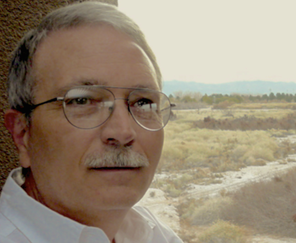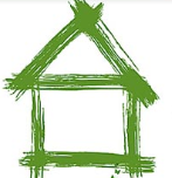 Michael A. Thomas, FASID, CAPS
Michael A. Thomas, FASID, CAPS In this continuing series, 5 Questions + 5 Minutes, you'll learn about one of our DAASE members and their passion, a bit about their background and their philosophies.... this time with member: Michael A. Thomas, FASID, CAPS.
(1) At what point in your life did you discover an interest in your current profession ?
It came early. As a child I was always building stuff and making playhouses from large cardboard boxes. I would spend hours arranging boxes into various shapes, layouts; they had doors and windows, even some with gardens. As to “staying in place,” my interest came from personal experience, taking care of my mother, an independent and sometimes exasperating individual, but one who choose to remain in her home despite a debilitating illness. I learned a lot from her struggles to remain independent.
(2) Why do you believe that accessible and sustainable design is such an important concept?
The world continues to be a complex and challenging environment. So in a corner of the world we can truly call our own, our homes need to be designed to support our quality of life,… a place away from chaos and confusion,…. a retreat of security, safety and solace. And when homes are designed in such ways as to remove barriers, enhance mobility and sustain our human experience, we can remain independent for an extended period of time
(3) What is the biggest single challenge in the implementation of accessible, sustainable design?
The biggest challenge is educating the consumer. Everyone is living longer, healthier and active lives and “universal design” concepts are difficult for them to accept. So as design professionals, we need to showcase great design….spaces that not only are awesome looking but with products that are sleek + stylish + when assembled all together are able to perform in exceptional ways in sustaining one’s independence.
(4) Considering your clients, what are some of the benefits of "staying in place” you have observed?
Top of the list: peace of mind. Clients may not realize this benefit at first until a temporary or permanent disability strikes but once they realize it, they are grateful that we included these features into the design of their home.
(5) If not this profession, then what other profession or career have you ever contemplated?
I really have never thought of undertaking any other profession that design. Having grown up in a family where the construction and design of an environment was a part of the family DNA, it is just what I was to become.
(1) At what point in your life did you discover an interest in your current profession ?
It came early. As a child I was always building stuff and making playhouses from large cardboard boxes. I would spend hours arranging boxes into various shapes, layouts; they had doors and windows, even some with gardens. As to “staying in place,” my interest came from personal experience, taking care of my mother, an independent and sometimes exasperating individual, but one who choose to remain in her home despite a debilitating illness. I learned a lot from her struggles to remain independent.
(2) Why do you believe that accessible and sustainable design is such an important concept?
The world continues to be a complex and challenging environment. So in a corner of the world we can truly call our own, our homes need to be designed to support our quality of life,… a place away from chaos and confusion,…. a retreat of security, safety and solace. And when homes are designed in such ways as to remove barriers, enhance mobility and sustain our human experience, we can remain independent for an extended period of time
(3) What is the biggest single challenge in the implementation of accessible, sustainable design?
The biggest challenge is educating the consumer. Everyone is living longer, healthier and active lives and “universal design” concepts are difficult for them to accept. So as design professionals, we need to showcase great design….spaces that not only are awesome looking but with products that are sleek + stylish + when assembled all together are able to perform in exceptional ways in sustaining one’s independence.
(4) Considering your clients, what are some of the benefits of "staying in place” you have observed?
Top of the list: peace of mind. Clients may not realize this benefit at first until a temporary or permanent disability strikes but once they realize it, they are grateful that we included these features into the design of their home.
(5) If not this profession, then what other profession or career have you ever contemplated?
I really have never thought of undertaking any other profession that design. Having grown up in a family where the construction and design of an environment was a part of the family DNA, it is just what I was to become.
ABOUT: Michael A. Thomas, FASID, CAPS is a multi-faceted interior designer, author and speaker with a passion for the design of the built environment and its impact on the human experience. He is the president of the Design Collective Group, an interior design firm he founded two decades ago. With a special interest in both home and work environments that are functional, practical and accessible to anyone, no matter age or ability, Michael’s designs often features themes of aging in place and universal design. Michael is the co-author of the well respected book Residential Design for Aging In Place, a contributing author to Interior Graphic Standards and has been quoted in various media including Dwell Magazine, Time, Interiors + Sources, Remodeling Magazine, The Miami Herald, Palm Springs Life, The Desert Sun and the Houston Chronicle on issues of aging in place and universal design for work and home environments. As a speaker, he has shared his knowledge, expertise and passion in more than 250 lectures and workshops across the country. Michael is also a Certified Aging In Place Specialist (CAPS), one of the very few interior designers in the US to hold such certification.
As an active volunteer for his professional society ASID, the American Society of Interior Designers, Michael has served as a volunteer in many capacities including six years on ASID’s National Board of Directors. In 2004 he was honored by his peers with the designation of Fellow of the Society, the highest honor accorded to one of its members. And in 2012-2011, Michael was elected to the position of ASID’s National President.
Michael is a founder and President of the Design Alliance for Accessible Sustainable Environments (DAASE), a non-profit group dedicated to the design of accessible spaces and sustainable communities. He is also a member of the Frank Lloyd Wright Preservation Trust, the American Crafts Council, Palm Springs Preservation Foundation and a member of the advisory board for the Department of Design, Housing and Merchandising at Oklahoma State University in Stillwater, OK. Michael established a home décor studio, Design Pure + Simple, in downtown Palm Springs, CA. which features fine craft, art and accessories for the discriminating client and home.
• For More Information About Michael: visit: www.thedesigncollectivegroup.com
As an active volunteer for his professional society ASID, the American Society of Interior Designers, Michael has served as a volunteer in many capacities including six years on ASID’s National Board of Directors. In 2004 he was honored by his peers with the designation of Fellow of the Society, the highest honor accorded to one of its members. And in 2012-2011, Michael was elected to the position of ASID’s National President.
Michael is a founder and President of the Design Alliance for Accessible Sustainable Environments (DAASE), a non-profit group dedicated to the design of accessible spaces and sustainable communities. He is also a member of the Frank Lloyd Wright Preservation Trust, the American Crafts Council, Palm Springs Preservation Foundation and a member of the advisory board for the Department of Design, Housing and Merchandising at Oklahoma State University in Stillwater, OK. Michael established a home décor studio, Design Pure + Simple, in downtown Palm Springs, CA. which features fine craft, art and accessories for the discriminating client and home.
• For More Information About Michael: visit: www.thedesigncollectivegroup.com

 RSS Feed
RSS Feed